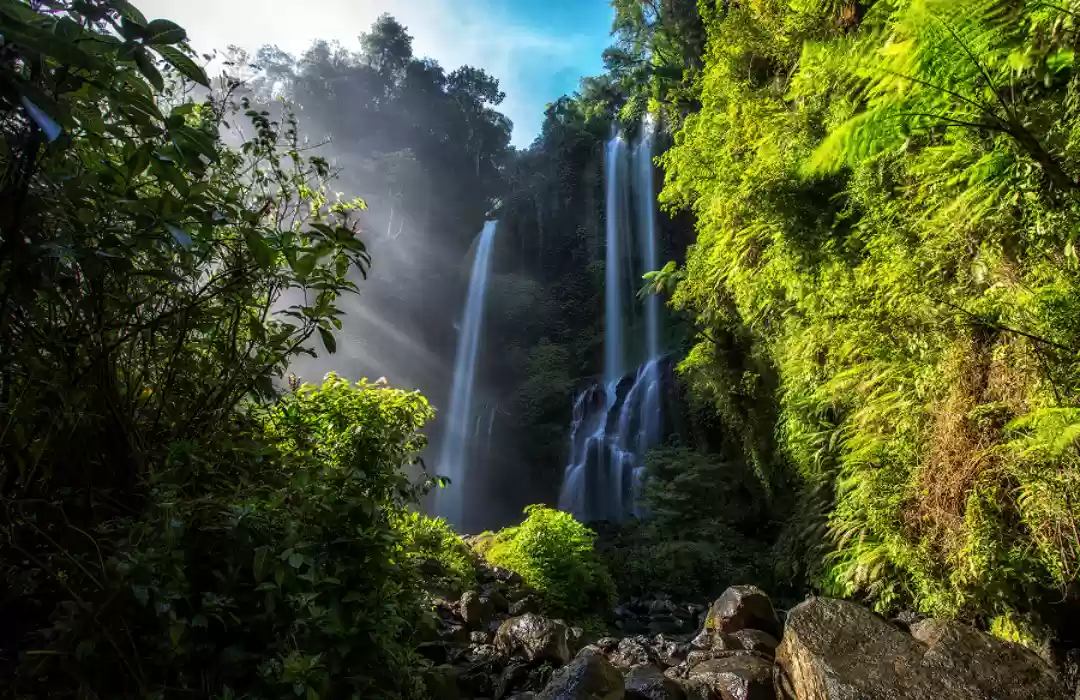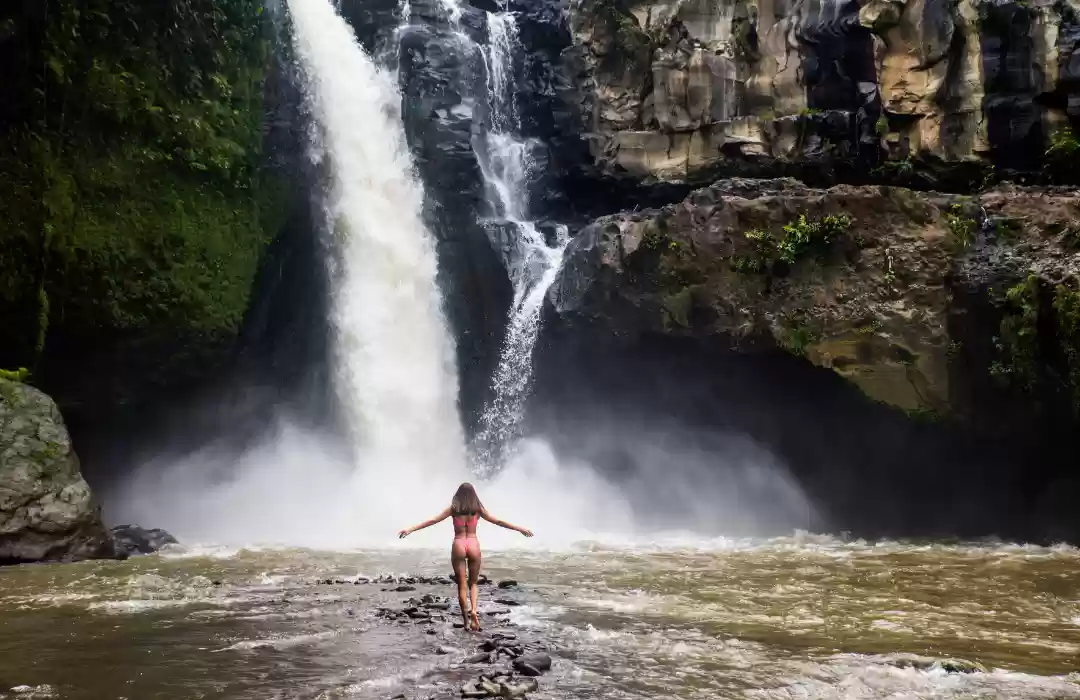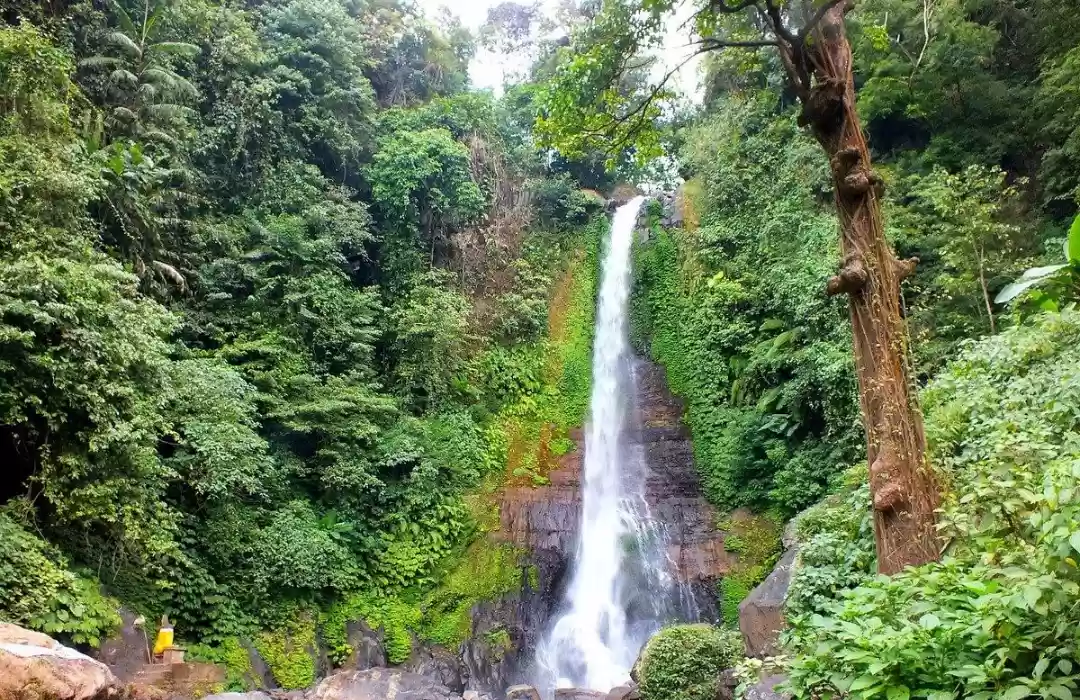How to Make the Most of Bali’s Waterfalls – Best Time to Visit and Photography Tips

Bali’s waterfalls are some of the most beautiful and serene natural wonders on the island, offering travelers a chance to connect with the island’s pristine beauty. From the rushing streams and lush jungle landscapes to the crystal-clear pools waiting to be discovered, these waterfalls are perfect spots to explore, relax, and take some stunning photos. But, how do you make the most of your visit to these awe-inspiring waterfalls? What’s the best time to visit, and how can you capture their magic through your lens?
In this guide, we’ll walk you through everything you need to know about visiting Bali’s waterfalls, including the best time to visit, top waterfalls to explore, and expert photography tips to help you capture Bali’s natural beauty.
1. Why Bali’s Waterfalls Are a Must-See
Bali is often associated with its beaches and rice terraces, but its waterfalls are equally breathtaking and offer a completely different side of the island. These natural wonders are tucked away in hidden corners of the island, many of them nestled in lush jungles, creating an air of mystery and tranquility that you can only experience in Bali.
What Makes Bali’s Waterfalls Special
-
Diverse landscapes: Bali’s waterfalls vary from small cascades in the hills to grand waterfalls with dramatic drops, often surrounded by dense forest or volcanic landscapes.
-
Sacred significance: Many waterfalls in Bali are considered sacred, with locals believing that the water holds healing properties. This cultural significance adds an extra layer of spiritual depth to your visit.
-
Adventure and relaxation: Exploring these waterfalls is both an adventurous hike through jungles and a relaxing experience, whether you’re swimming in the pool below or simply basking in the beauty of your surroundings.
Local Tip: Always take a moment to soak in the spiritual energy of the waterfall, especially if you’re visiting a sacred site, like Tirta Empul.
2. The Best Time to Visit Bali’s Waterfalls
The timing of your visit plays a key role in ensuring you get the most out of your waterfall adventures in Bali. The island’s tropical climate means that weather conditions can significantly impact your experience, both in terms of crowds and the water flow at the falls.
Best Time of Year for Waterfalls in Bali
-
Dry Season (April – October): The dry season is the best time to visit Bali’s waterfalls. The weather is sunny and clear, and the trails are typically dry and easier to navigate, making it perfect for trekking. The waterfalls, especially those located near mountainous areas, will also be more accessible during this time.
-
Wet Season (November – March): While the wet season can bring dramatic waterfalls, the trails leading to the falls can become slippery and muddy. The rain can also reduce the visibility of the waterfalls, and sometimes, roads to remote locations may be flooded or closed. However, the waterfalls may have a more powerful and dramatic flow during this time, and if you don’t mind the rain, you can enjoy a quieter, less crowded experience.
Best Time of Day to Visit Waterfalls
-
Early Morning: If you want to avoid crowds and enjoy a peaceful experience, visiting waterfalls in the morning is the best choice. Not only will you have more privacy, but you’ll also get to enjoy the cooler temperatures and better lighting for photos.
-
Late Afternoon: If you’re chasing the golden hour, visiting waterfalls in the late afternoon provides the perfect soft light for photography. However, be cautious of the sunset time, as some waterfall hikes may take longer than expected.
Local Tip: To experience a waterfall in its full glory, try to visit after the rainy season ends in April, when the water is flowing at its most powerful, but the weather is starting to dry up.
3. Top Waterfalls to Visit in Bali
Bali is home to numerous waterfalls, each offering something unique. From hidden gems in the jungle to iconic waterfalls that are easier to reach, here are some of the best waterfalls to explore.
Sekumpul Waterfall

Sekumpul is widely regarded as one of the most beautiful and hidden waterfalls in Bali. Located in the northern part of Bali, it’s a bit more difficult to reach but offers an experience unlike any other.
-
Why It’s Worth the Hike: Sekumpul is actually a collection of seven waterfalls that create an incredibly dramatic and picturesque scene. Surrounded by dense jungle, it’s perfect for those seeking a more adventurous hike.
-
What to Expect: The hike down is a bit challenging, with steep terrain and slippery paths, but the view of the waterfalls from the base is worth every step.
Local Tip: If you’re up for a challenging trek, consider hiring a local guide, as the path can be tricky to navigate.
Tegenungan Waterfall

Located near Ubud, Tegenungan Waterfall is one of Bali’s most popular waterfalls, and for good reason. It’s easily accessible and offers a stunning backdrop for photos.
-
Why It’s Popular: Tegenungan is ideal for photographers because of its dramatic setting surrounded by lush greenery. The waterfall has a large, open pool at the base, perfect for swimming and cooling off.
-
What to Expect: While the falls can be crowded at times, you can visit early in the morning for a peaceful experience or during the afternoon for better lighting for photos.
Local Tip: Bring your swimwear if you want to take a refreshing dip in the cool waters.
Gitgit Waterfall

Gitgit Waterfall is located in North Bali and offers a more peaceful, serene atmosphere compared to some of the other waterfalls.
-
Why It’s Worth Visiting: Gitgit is a multi-tiered waterfall that is easily accessible and offers a calming atmosphere away from the hustle and bustle of the island’s more popular spots.
-
What to Expect: The trek to Gitgit is relatively short and easy, making it ideal for families or those who prefer a more relaxed walk. The cool, crisp water is perfect for a swim, and the surrounding forest offers a perfect spot for quiet reflection.
Local Tip: There are locals selling fresh fruit around the waterfall, making it a perfect opportunity to cool off and enjoy a healthy snack.
4. Waterfall Photography Tips – How to Capture Bali’s Beauty
Capturing the beauty of Bali’s waterfalls through your lens can be an incredible experience, but it also requires some techniques to get the best shots. Here are some photography tips to help you capture the magic of Bali’s waterfalls.
Best Camera Settings for Waterfall Photography
-
Use a Tripod: A tripod is essential for long-exposure shots of the waterfalls, which help capture the flowing water and create a smooth, ethereal effect.
-
Shutter Speed: To create the silky smooth water effect, set your shutter speed to around 1/4 second to 1 second, depending on the flow of the water.
-
Aperture: Use a narrow aperture (f/8 - f/16) to ensure that both the foreground and background are in focus, giving you the most detailed shot.
-
ISO: Keep your ISO low (100-200) to avoid noise in your photos.
Best Time for Waterfall Photography
-
Golden Hour: The best time for capturing waterfalls in Bali is during the golden hour—either at sunrise or sunset. The soft lighting will help you create more dramatic, vivid photographs.
-
Avoid Midday Sun: The harsh midday sun can create harsh shadows and blown-out highlights, so try to avoid shooting during the peak of the afternoon.
Framing Your Shots
-
Use the Environment: Include elements of the surrounding landscape, like trees, rocks, and lush greenery, to give your photos a more immersive, natural feel.
-
Long Exposure for Dramatic Effect: A long exposure can turn a waterfall’s flow into a smooth, soft veil, creating a beautiful, dreamlike effect in your photos.
Local Tip: Carry waterproof gear for your camera, especially if you plan on getting close to the waterfall or swimming in its base.
5. Be Respectful of the Environment and Local Culture
While Bali’s waterfalls are natural wonders, they are also sacred spaces for the local community. When visiting, it’s important to be respectful of the environment and local customs.
Respect the Environment
-
Leave no trace: Always pick up after yourself and avoid leaving litter behind. Bali’s natural beauty is fragile, and it’s important to help keep it pristine.
-
Follow local customs: In some locations, waterfalls are considered sacred. Always check with locals or guides if there are any cultural practices you should follow.
Local Tip: If you plan on swimming in a waterfall pool, be mindful of the local customs regarding water rituals—some waterfalls may require you to offer a small prayer or offering before entering.
Bali’s Waterfalls Are Waiting
Bali’s waterfalls are not just stunning to look at—they are an opportunity to connect with nature, experience adventure, and capture the island’s beauty through your lens. Whether you’re exploring remote waterfalls, swimming in cool waters, or hiking through dense jungle, these natural wonders are an essential part of the Bali experience.
By knowing the best time to visit, preparing for photography, and respecting local culture, you’ll be able to experience Bali’s waterfalls at their finest.
Quick Summary of Bali’s Best Waterfalls
-
Best for Hiking and Adventure: Sekumpul, Gitgit
-
Best for Photography: Tegenungan, Sekumpul
-
Best for Peaceful Experience: Gitgit, Sekumpul
For an unforgettable waterfall experience, consider booking a guided waterfall tour with Bali Gate Tours, ensuring you’ll see Bali’s hidden gems while staying safe and informed.










